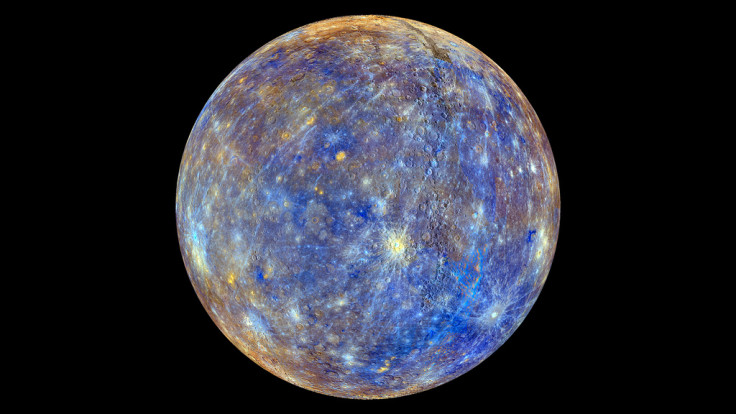Mercury has been 'painted black' by comet dust over billions of years

Mercury has been "painted black" over billions of years by comets passing the smallest planet in the solar system.
The planet's dark surface has long baffled scientists, with its barely-reflective surface being far darker than its closest airless neighbour – the Moon.
These airless objects are known to be darkened by a constant bombardment of solar wind and tiny meteorite impacts, which create a thin coating of dark iron nanoparticles on the surface. However, spectral data from Mercury shows its surface has very little nonaphase iron, raising questions about how and why it appears so dark.
Researchers at Brown University in Rhode Island have now said the planet has been steadily coated by carbon dust coming off passing comets for billions of years.

Publishing their findings in the journal Nature Geoscience, the authors noted that when comets approach Mercury and the Sun, they often start to break up.
The dust that comes off these comets can be composed of up to 25% carbon by weight, meaning the planet would be exposed to a steady bombardment from these comets.
Megan Bruck Syal, a postdoctoral researcher at Lawrence Livermore National Laboratory, used a model of impact delivery and micrometeorite flux at Mercury to predict how often cometary material would hit the planet, how much carbon would stick to it and how much would be sent off back into space.
Findings showed that Mercury's surface should be between 3-6% carbon.
The scientists then used a 14ft cannon to stimulate celestial impacts by firing projectiles at 16,000mph. They launched projectiles in the presence of sugar, which mimics the organics in comet material. The intense heat of the impact burns the sugar and releases carbon.

They fired this onto material mimicking lunar basalt – the rock that makes up the dark patches of the moon. "We used the lunar basalt model because we wanted to start with something dark already and see if we could darken it further," said co-author Peter Schultz.
Findings showed tiny carbon particles became embedded in the impact, reducing the amount of light reflected by the target material to less than 5% – about the same as Mercury's darkest patches.
"We show that carbon acts like a stealth darkening agent," Schultz said. "From the standpoint of spectral analysis, it's like an invisible paint. We think this is a scenario that needs to be considered. It appears that Mercury may well be a painted planet."
© Copyright IBTimes 2025. All rights reserved.






















